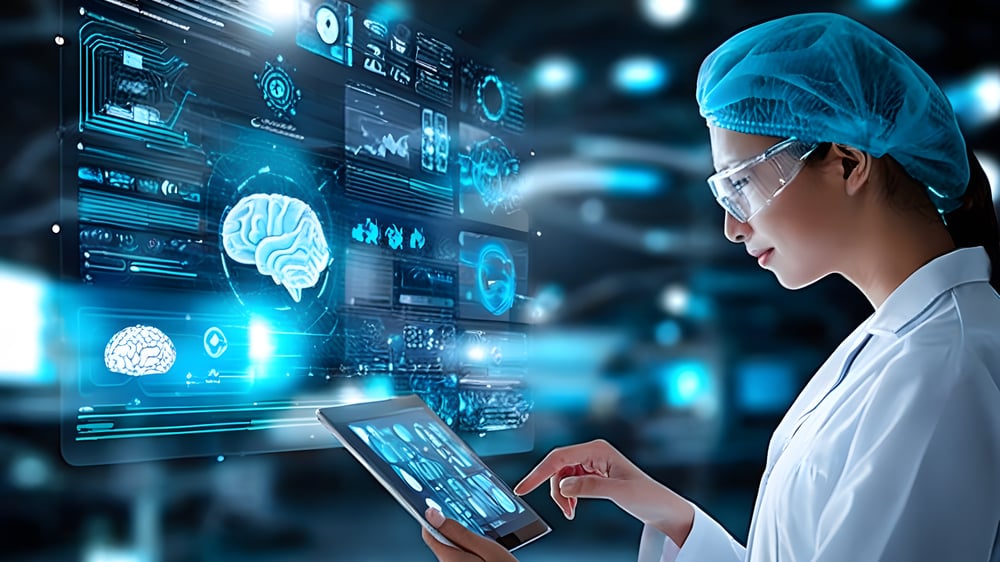Enhancing Public Services Through Artificial Intelligence
Modev News govai 24-09-17 Modev Staff Writers 4 min read

AI for public services has great use potential. Governments can establish national priorities, investments, and rules for AI to transform policy-making and service delivery. But first, they must understand AI and how to use it effectively.
Use Cases: AI for Public Services
AI creatively solves various problems, from simplifying administrative tasks to addressing complex societal issues. Let's examine some important examples that show how powerful AI for public services can be.
Administrative Tasks
Government agencies can use smart technology to turn paper documents into digital files. This helps them process applications and claims faster and easier.
AI-powered online tools can handle lots of data and reduce the need for people to visit government offices. By using computer vision and NLP, you can turn paper documents into digital files and search through online forms easily. This makes the process faster and more accurate, and you won't have to type in data yourself.
RPA systems and machine learning can automate the document review process, saving money and making the application process smoother.
AI can also show the status of cases, send electronic notices, display account balances, and give feedback to improve public services.
Automating back-office tasks is important for government agencies to improve the speed and quality of public services.
Combating Social Issues
AI can help us solve big social problems. It can look at data and predict things like homelessness, hunger, addiction, and mental health issues. These problems often go together, making life really hard.
In the past, we usually helped people after they had problems. Now, we can use AI to predict problems and stop them from happening. AI can examine public health records to find patterns and figure out what might cause these issues.
This helps us understand which programs will work best. For example, we can focus on reducing drug addiction in a specific area or preventing hunger in underserved communities. AI can also help us predict how new policies will affect people's health.
Medical Innovation
AI can help doctors find new ways to stop, find, and treat diseases. It can do this by looking at lots of medical information. Medical research takes a long time and costs a lot. AI can help by doing research on its own to find new medical things.
AI can talk to researchers like a person and put medical information into a database. Researchers can search the database using simple words. This means they can get new medical information and answers to their questions. AI can also look at medical information like pictures, genes, and data from special devices. This can help find, stop, and treat diseases faster.
AI can also help find new medicines. It can use machine learning to guess how chemicals might work together. This helps find targets for new medicines and tells researchers which things might be good.
AI can help medical people understand difficult medical information. Machine learning can find new things in big sets of data. This can help find new diseases and medicines. This is great for helping doctors find and treat diseases, and it helps patients.
Mitigating Health Crisis
AI can be a big help in dealing with health and environmental problems. It can predict when diseases might break out by looking at information from the economy, society, the internet, and special devices. This can help us see if an epidemic is coming, how it's spreading, and if anything is strange.
During a health crisis, AI can look at new information to find out where the outbreak started and use that to help make new medicines. This can make vaccines and better tests faster. AI can also help us understand climate change by using big data and computer models.
AI can look at pictures from space to learn about wildlife, how healthy it is, and how the environment is changing. It can even track gases that are making the planet warmer. AI can also use special computer models to figure out how much carbon is being released by companies around the world. This is important for understanding how it's affecting the climate, controlling it, and checking if efforts to reduce it are working.
In general, AI can change how we stop diseases by making it easier to find risks, learn more about them, and make plans faster. It can also help us do better tests and find new ways to understand and control the changing climate worldwide.
Understanding Employee Patterns
AI can help HR departments understand how employees feel about different company benefits. It can track which benefits are most popular and how happy employees are with their choices.
AI can also help predict which benefits might be most useful to employees. HR can use this information to decide which benefits to offer and how much they should cost.
AI can even help employees find the best benefits for them. It can suggest benefits based on an employee's needs and history.
By using AI, companies can offer better benefits to their employees. This can make employees happier and help the company save money.
Takeaway
Using AI for public services can change how governments work. It can make things faster and better and help people live happier lives.
But before using AI, governments need to think about some things. They need to make sure it’s done right, spend money on AI research, and make sure AI is clear and honest.
If governments do this, AI can help them make the government work better and be fairer for everyone.
Learn more about using AI for public service at GovAI Summit 2024 on October 28-30 in Arlington, VA.